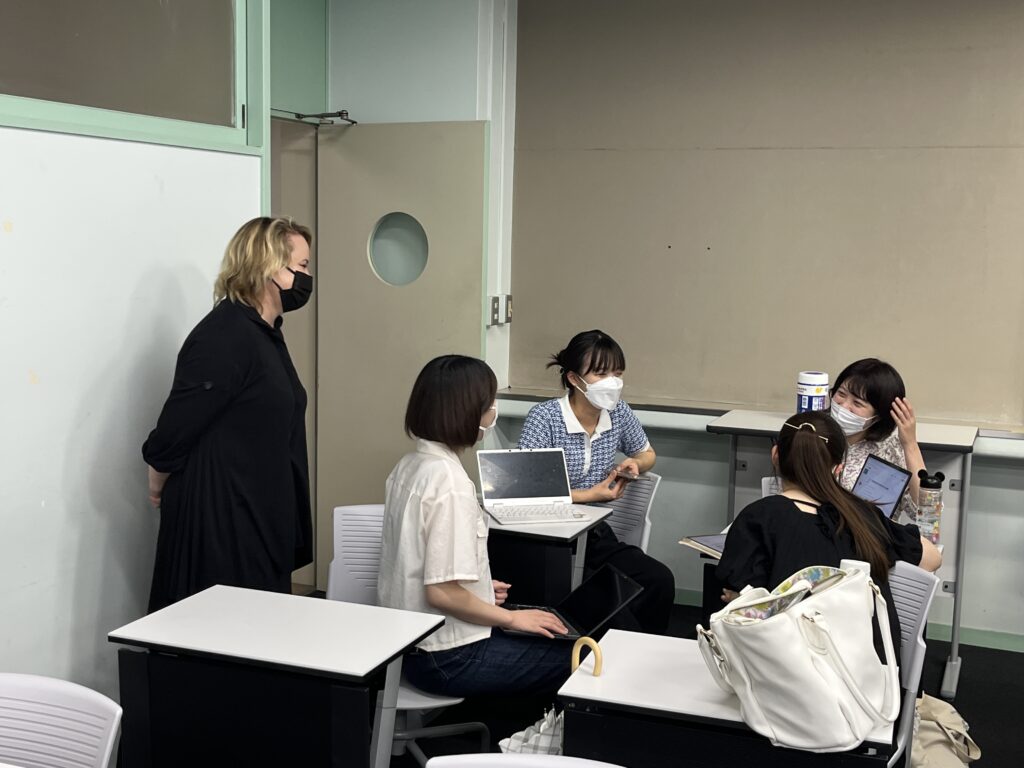英コミでは3・4年生を対象にした選択科目のひとつに、Hospitality Englishという科目があります。ビジネスで使われる英語を学ぶことはもちろん、ビジネスの学問で幅広く知られている理論を用いたプレゼンをし、「英語で学ぶ」を実践する授業となっております。今回は担当教員のクリスティ・セージ先生に、学生のプレゼンの内容や様子について書いてもらいました!
One well-known business theory that we focused on in the Hospitality English course this semester was Porter’s Five (5) Forces. It’s a tool to analyze industry competition. We applied it to the hospitality and tourism industry.
For this course’s final task, students recreated their own versions of Porter’s 5 Forces diagram. They were required to select a sub-industry within the hospitality and tourism industry. Some choices included: Cafes/restaurants, fast-food chains, theme parks, weddings, LCC airlines, and airports. Students also considered: macroeconomic trends (PESTEL) (i.e., government regulations or technology advancements) and target customers (STP) (e.g., Japanese female university students or budget international business travellers) relevant to their chosen sub-industries.
Students researched autonomously as individuals or in pairs to find real-world examples to support their 5-forces diagrams. On presentation day, they took turns to i) present their slides and ii) engage in Q&A. Also, in the role of “manager”, they considered strengths and improvement points of peers’ presentations.
Even though Porter’s 5 Forces is a challenging theory, the students demonstrated in their presentations insightful analysis. Plus, they gave some well-informed and innovative recommendations to improve industry competitiveness.
I hope that the 5-forces tool will be helpful to some in their future careers when they need to consider industry competition as managers in the tourism and hospitality industry, other corporations, or their own businesses!


